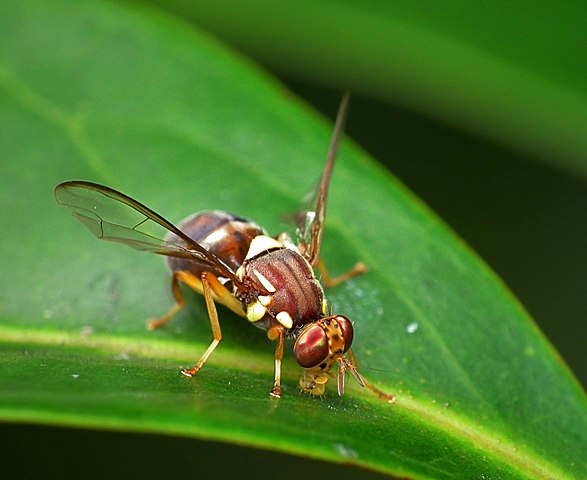Queensland Fruit Fly - Action guide
Your fruit trees or tomato plants are burgeoning with yield and this year promises to deliver.
But as harvest draws closer, there is a menace lurking which can devastate not only your crop, but also your neighbour’s and the local horticulture industry.
The Queensland Fruit Fly!
Yes, the Queensland fruit fly has caused many a heart-ache in backyards across Australia.
About the Queensland Fruit Fly
Correct, the Queensland fruit fly is a native of the sunshine state (and northeast NSW).
Thanks to expanding habitat in urban and horticultural areas though, it can now call Queensland, NSW, Victoria and the Northern Territory home.
There are over 250 species of fruit fly in the Tephriridae family, however only around 10 are pests.
The one that is most likely to cause damage to home and commercial horticulturalists is the Queensland Fruit Fly. Number one on the fruit fly hit list!
Is it that big a problem?
If you have ever bitten into an appealing apricot or tomato to find the innards are brown, mushy and wriggly, you’ll be all too aware of the damage Queensland Fruit Fly can cause.
They attack and damage many popular fruits and vegetables, and can impact up to 100 per cent of some fruit crops if uncontrolled.
Summer ripening fruits and vegetables are at risk, including tomatoes, capsicums, stone fruits, apples and strawberries.
Uncontrolled fruit fly outbreaks can go on to affect your neighbours and local horticulture industry, so it is a pest that needs everyone to be doing their bit to control it.
How do they damage fruit and veg?
As fruit begins to ripen, adult female fruit flies lay their eggs in the flesh.
The eggs soon hatch and the emerging maggots move into action. While the fruit skin might look OK, or have a few sting marks, but underneath is a different story!
The larvae cause the fruit to ripen prematurely, and soon it becomes a brown, soft, mushy and wriggling mess.
The broader implications
While only a tiny insect, the Queensland Fruit Fly can have a big impact on you and horticultural businesses:
- see costly control programs implemented to control it
- lead to lost income through these costs or lost produce
- increase food prices
- limit the availability of some foods.
What can I do?
The Queensland Fruit Fly, like many unwelcome guests, can be hard to budge.
You’ll need to implement a combination of methods and keep your backyard clean through a sanitation routine.
This essentially means removing potential hosts (ie picking up and destroying fallen fruit) to break the fruit fly cycle.
More information on fruit fly control methods and programs is available on the Prevent Fruit Fly website.
Principles of a good control program
While methods and approaches vary, all effective control programs share some common principles.
They are planned and implemented (ie things actually happen).
A focus on Queensland Fruit Fly Season, which starts in spring to prevent damage happening.
Are ongoing – infestation can happen at any time in spring, summer or autumn.
The control calendar
Spring
- Remove host plants from your garden if not able to control Queensland Fruit Fly.
- Set traps to monitor and check weekly.
- Remove any excess ripe citrus, especially late-season orange, grapefruit and fallen loquats.
- Spray high-risk fruit if desired as per label instructions.
Summer
- Net your garden or bag individual fruit.
- Get into a habit of picking up fallen fruit daily.
- Check tomatoes for sting marks.
- Heat treat fallen and infested produce to kill the maggots (eg in a plastic bag left in the sun).
- Trap and monitor.
- Spray high-risk fruit if desired as per label instructions.
- High-risk fruits include pomefruits (eg apples, pears and quinces), early citrus (eg mandarin) and pomegranate.
Winter
- Prune fruit trees to make them more manageable for netting and picking.
- Replace host trees if needed with non-host plants.
Read more about fruit fly control
Prevent Fruit Fly (Plant Health Australia)
Queensland Fruit Fly and the home gardener (NSW DPI)
The Fruit Fly Calendar (NSW DPI)
